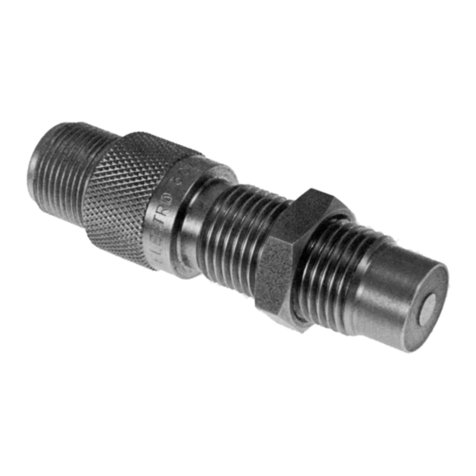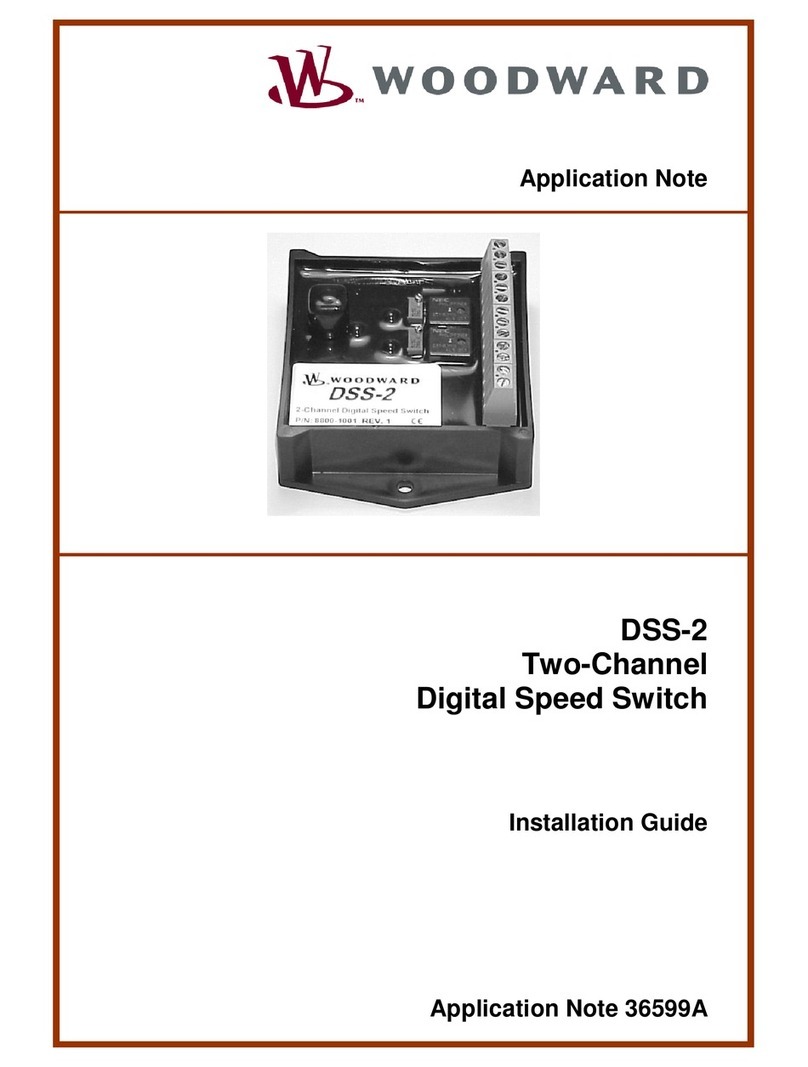
DSS-2 Two-Channel Digital Speed Switch Manual 36598
ii Woodward
Contents
(cont'd.)
C
HAPTER
5. ACT O
PERATION
..................................................................26
ACT Installation ....................................................................................................26
ACT Kit Contents ..........................................................................................26
Set-up Requirements....................................................................................26
Hardware Set-up...........................................................................................26
Software Set-Up............................................................................................27
Basic ACT Operation............................................................................................28
Running the ACT Software ...........................................................................28
Progress Display Screen ..............................................................................28
Moving Around the Software.........................................................................29
ACT Menus & Options..........................................................................................29
ACT Menu Structure .....................................................................................29
File Menu ..............................................................................................................30
Purpose.........................................................................................................30
Save DSS-2 Cal to File.................................................................................30
View Cal File Comments...............................................................................31
View Text File ...............................................................................................32
Convert Commands......................................................................................32
Convert DSS-2 Cal to Text ...........................................................................32
Convert Cal File to Text ................................................................................33
Convert Cal File to Strategy..........................................................................33
Calibrate Menu......................................................................................................33
Change DSS-2 Calibration............................................................................33
Calibration Categories ..................................................................................35
List of Parameters.........................................................................................36
Download Cal File to DSS-2 .........................................................................39
Compare DSS-2 Cal to File Cal....................................................................40
Change DSS-2 Password.............................................................................41
DSS-2 Calibration Wizard.............................................................................43
Monitor Menu........................................................................................................44
Parameter View ............................................................................................44
Parameter Plot..............................................................................................45
Display Faults................................................................................................46
Control Strategy ............................................................................................47
Configure Menu ....................................................................................................48
Configure Serial Port.....................................................................................48
Help Menu.............................................................................................................49
Help Topics...................................................................................................49
About ACT ....................................................................................................49
User Manuals................................................................................................49
C
HAPTER
6. T
ROUBLESHOOTING
..............................................................50
General Checklist .................................................................................................50
Fault Codes ..........................................................................................................50
Glossary of Technical Terms................................................................................52
C
HAPTER
7. S
ERVICE
O
PTIONS
................................................................53
Product Service Options .......................................................................................53
Returning Equipment for Repair ...........................................................................54
Replacement Parts ...............................................................................................55
How to Contact Woodward...................................................................................55
Engineering Services............................................................................................56
Technical Assistance............................................................................................57





























